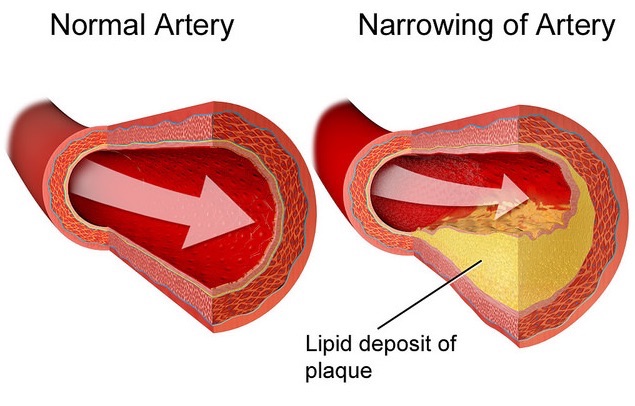Atherosclerosis and Erectile Dysfunction: A Vulnerable Rush
An increasing number of men suffer from erectile dysfunction. Two-thirds of men over 70 have significant symptoms of erectile dysfunction, and up to 39% of men under 40 report some degree of erectile dysfunction.
There is no immediate threat to life from erectile dysfunction, but that does not mean it is not serious. The rate of depression and decreased enjoyment in life is higher among men with erectile dysfunction (ED).
There might be a misconception that ED (erectile dysfunction) has nothing to do with your heart. ED, however, could be an indication that your arteries are clogged.
There’s nothing more important than blood flow. It is essential that blood has no trouble getting to your penis for you to obtain and maintain an erection. In people with ED, it is possible that one or more of their blood vessels have narrowed or been blocked.
Your arteries can become clogged with plaque if they are not clean. The disease is known as atherosclerosis, which is characterized by hardening of the arteries due to plaque buildup.
Erectile dysfunction
Erectile dysfunction is basically a disorder found in men which could be a sign of physical or psychological condition. The symptoms associated with this disorder is found in men’s reproductive organ i.e. inability to keep an erection firmer and longer enough during a sexual activity.
There are many men who experience erectile dysfunction occasionally because of stress, fatigue, alcohol, or emotional issues, but 25% of men have recurring episodes of the disorder. People dealing with erectile dysfunction will be:
- Unable to achieve erection at anytime needed.
- might achieve erection sometime but not when needed like during sexual activity.
- might able to achieve erection when needed but not long enough
Atherosclerosis
Whenever plaque builds up on the interior walls of your arteries, the condition is known as atherosclerosis. Blood and oxygen are transported from the heart to the rest of the body through the arteries.

There are several substances that make up plaque, including fat, cholesterol, calcium, and others. Plaque builds up in your arteries, causing them to narrow and harden.
During heartbeats, blood flows through the arteries to reach different parts of the body. In order for blood to reach the penis, it passes through the belly arteries and then branches off. As a result of an erection, these arteries widen, or dilate to cause an erection. This makes the penis swell due to more blood flow.
Atherosclerosis and ED
Having erectile dysfunction can indicate that some of the blood vessels lining that path aren’t in good condition. Despite not having a blocked artery, you might have an issue with the lining of your blood vessels. Erectile dysfunction can occur for a variety of reasons, not just atherosclerosis. If you have this problem, you should see a doctor to figure out what’s causing it.
Blood supply blockage
It is necessary for the blood vessels in the penis to be robust, in order for blood flow to increase rapidly during an erection. There is usually a problem with blood vessels everywhere when someone suffers from erectile dysfunction. In the early stages of atherosclerosis, this can signal increased risk.
When sexually arousing, blood flow needs to be opened wide in the penis. When you exercise, your heart’s arteries need to be wide open so that blood can flow freely. For this purpose, the inside lining of blood vessels (endothelium) releases chemicals on demand.
It is possible for high blood pressure, diabetes, or smoking to damage the endothelium. In addition, they contribute to the development of atherosclerosis.
As soon as the endothelium is damaged, the arteries cannot expand as well, so blood flow is reduced. Erections are less firm when there is less blood flow into the penis
The Early Warning Sign
Additionally, the endothelium functions as a maintenance crew to stop the formation of atherosclerotic plaques. Before atherosclerotic blockages are visible, the endothelium is damaged.
Erectile dysfunction has long been acknowledged by medical professionals as a “early warning symptom” of atherosclerosis. Erection problems are typically a sign that atherosclerosis is developing. In the arteries of the heart or brain, atherosclerosis may already be present if there is erectile dysfunction.
REFERENCES:
- https://my.clevelandclinic.org/health/diseases/16753-atherosclerosis-arterial-disease
- https://www.webmd.com/erectile-dysfunction/guide/atherosclerosis-and-erectile-dysfunction
- https://www.ahajournals.org/doi/10.1161/CIRCULATIONAHA.110.017681
- https://www.ncbi.nlm.nih.gov/pmc/articles/PMC5448724/
- https://www.medicinenet.com/script/main/art.asp?articlekey=114356
- https://www.nature.com/articles/ijir20123
- https://www.healio.com/news/cardiology/20190316/link-between-atherosclerosis-erectile-dysfunction-strengthened-in-imaging-study
For more details, kindly visit below.